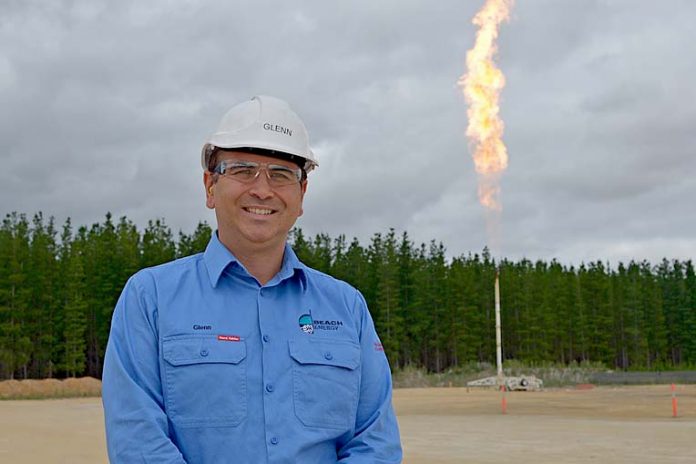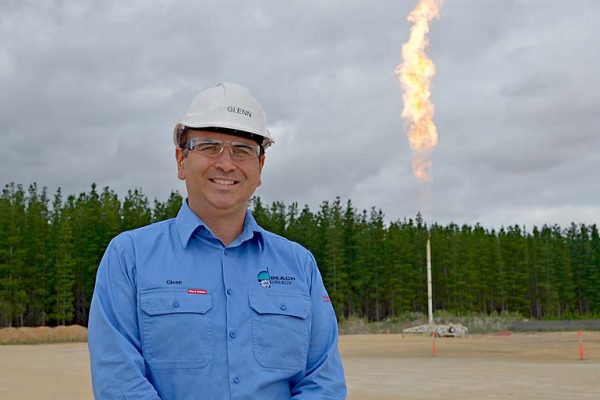

PRODUCTION is well under way at Beach Energy’s Haselgrove-3 conventional gas well north of Mount Gambier with flaring continuing at the site.
Flaring began on Saturday as the energy company tests whether there is a commercial gas field beneath the surface.
But environmental group Limestone Coast Protection Alliance has slammed the activity, claiming it was contributing to air pollution.
It is understood the noise from the 40-foot high flaring stack can be heard by residents in Penola with claims it sounds like the “roar from a jet”.
Beach Energy South East regional manager Glenn Toogood said yesterday flaring activity remained on schedule.
“We always operate the flare under strict conditions of the fire permit we have in place,” he told The Border Watch.
“Those conditions determine when we can’t flare.”
Despite the hot conditions on Saturday, he said it was not a total fire ban and the flaring was allowed to get under way.
“Importantly, we do have 24-hour coverage of that flare in the way of spotters that constantly watch what that flare is doing and it can be turned off in a matter of seconds,” Mr Toogood said.
“We also make sure we are not in close vicinity to vegetation that could easily ignite.
“While we are in close proximity to existing pine trees, there is no direct risk to that plantation.”
Moreover, Mr Toogood said Beach worked closely with OneFortyOne Plantations when the company undertook this type of activity.
“We also have fire suppressants and firefighter equipment on hand 24 hours a day.”
While conceding the flare could get “noisy”, he said the company did undertake noise surveys at a number of locations near the site.
“This is undertaken as part of the flaring activity,” he said.
Our vision and view is that we never want to have an adverse impact on the local community we work within.”
But he said it was important to stress the flaring was a “very short term” test.
“This week will be the last time we see this flare in this form,” he said.
“If this well is successful, then gas will be piped into existing infrastructure and gathering lines, which are only located 100 metres from the well itself.”
He said this would then be piped into the Katnook gas processing facility.
“The next time you will see this gas, it will be at an industrial facility or a household stove or gas heater in Mount Gambier,” Mr Toogood said.
Regarding concerns flowing from the alliance and people on social media, he said gas was an important energy source for the South East.
“We are here to make sure we can bring local gas back into local supplies,” he said.
We hope by doing that, it will put some downward pressure on prices.”
Alliance co-chair Angus Ralton described the flaring as “pretty intense” and a symbol of what could be rolled out into the future.
“It is certainly an emotional thing to look at,” Mr Ralton said.
He also questioned why energy companies were allowed to run an open flame given the restrictions to the rest on the community.
“You can hear it eight kilometres away in Penola,” he said.
“It sounds like a roaring jet and the glow is unbelievable.”
He said the activity was causing noise and environmental pollution.
“We have seen wind farms get stopped because they are in the flight of a rare bird, but what sort of bird would live around a gas flare?” Mr Ralton said.
He said gas production was contributing to climate change and was not “positive” for the environment.
Mr Ralton also warned possible gas industry growth in the region could result in a “criss-crossing” of infrastructure, which had potential to destroy existing industries.





